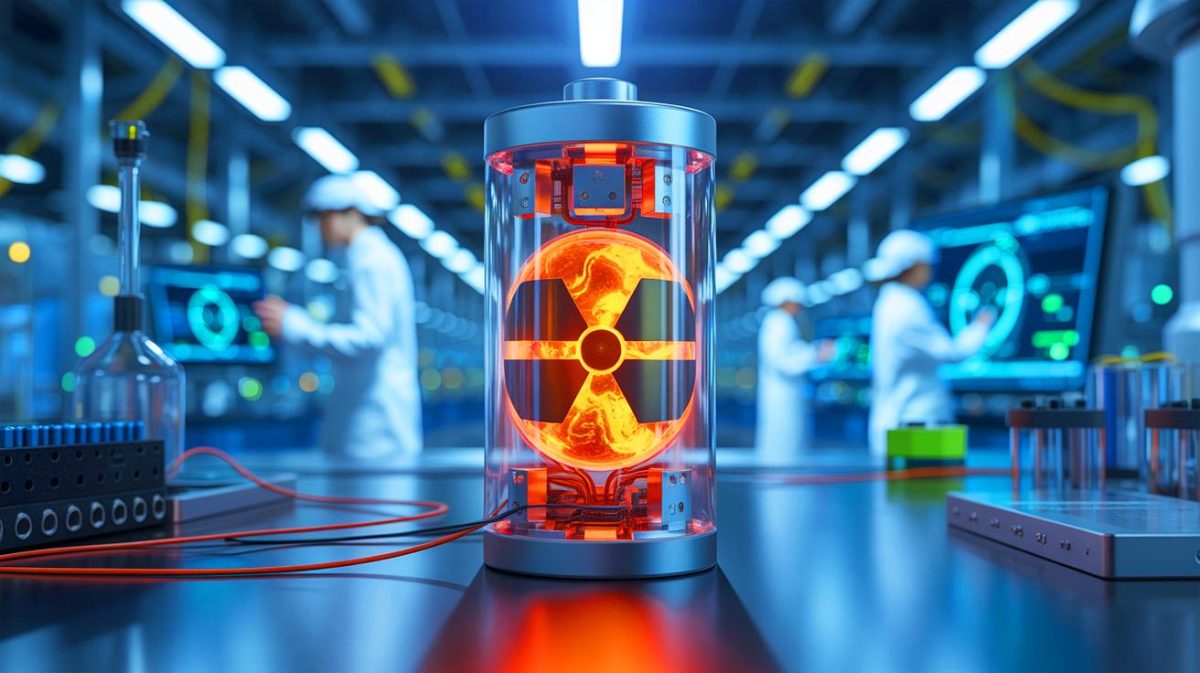| IN A NUTSHELL |
|
In recent years, the pursuit of alternative energy sources has become a critical focus for researchers worldwide. A breakthrough in this field originates from Japan, where scientists have developed a novel rechargeable battery using depleted uranium. This innovative technology promises to transform nuclear waste, traditionally a significant environmental concern, into a valuable energy source. If proven viable, this could mark a substantial shift in how we perceive and utilize nuclear byproducts, potentially revolutionizing the energy sector.
A Revolutionary Battery Using Depleted Uranium
The concept of a battery powered by depleted uranium might sound like science fiction, reminiscent of the fantastical fuel sources from iconic films. However, this is far from fiction. The Japanese researchers have created a prototype that utilizes depleted uranium, showcasing impressive potential. The team has reimagined the redox flow battery technology, which involves circulating liquids containing chemical materials through an electrochemical cell to store and release energy. The energy is stored in two separate tanks holding liquid electrolytes—one positively charged, the other negatively charged. The greater the capacity of these tanks, the more energy the battery can store and discharge.
In this cutting-edge design, depleted uranium replaces vanadium, typically used as the negative electrolyte, while iron is used on the positive side. This innovative choice could pave the way for more efficient and sustainable energy storage solutions. The implications of such a battery are vast, potentially offering a sustainable way to handle nuclear waste while providing a reliable energy source.
An Ingenious Solution, Decades in the Making
The journey to this breakthrough has been a long one, with Japanese researchers having explored this idea for over two decades. The Japanese Atomic Energy Agency (JAEA) has made significant strides by integrating iron into the battery’s design. Ferrous ions, in their various oxidation states, help stabilize the electrolyte solution. The scientists achieved a voltage of 1.3 volts by combining uranium-based and iron-based electrolytes, similar to that of a standard alkaline battery. While this is currently sufficient to power a simple diode, it marks the beginning of what could be a much larger development.
The prototype has undergone ten charging and discharging cycles without performance deterioration. During these cycles, the uranium electrolyte solution has changed colors, indicating its different oxidation states. This successful testing phase demonstrates the potential stability and efficacy of the technology, setting the stage for further development and scaling.
Challenges and Risks of Scaling the Technology
Despite the promising results, the use of depleted uranium in batteries raises concerns about safety and feasibility. On a laboratory scale, the scientists assure that the radioactivity is manageable. According to Kazuki Ouchi, a leading researcher at JAEA, the radioactivity of the uranium in the prototype is not problematic at this scale. In fact, depleted uranium is 60% less radioactive than natural uranium and does not generate excessive heat, minimizing associated risks. However, deploying this technology on a larger scale would require strict precautions, especially regarding containment and safety protocols.
The researchers have ambitious goals, aiming to develop flow cells with integrated electrodes to create a battery with significantly higher capacity. This advanced battery could potentially utilize 650 tons of depleted uranium, storing up to 30,000 kilowatt-hours, which is enough to supply energy to 3,000 homes daily in Japan. This scale of energy storage could be instrumental in stabilizing renewable energy sources like solar and wind, which are often intermittent.
Future Prospects and Potential Impact
The implications of this technology extend far beyond the laboratory. If these batteries can be produced economically, they could drastically change how we store and use energy, particularly in the realm of renewable sources. The primary aim of this technology is to enhance the storage capacity for renewables, which are crucial for sustainable future energy solutions. Nevertheless, the financial challenges of producing such batteries on a large scale cannot be underestimated.
As the world increasingly turns to renewable energy, the need for efficient and reliable storage solutions becomes ever more critical. Will the Japanese researchers overcome the technological and financial hurdles to bring this groundbreaking battery to market? The future of energy may very well depend on it.
Did you like it? 4.5/5 (27)









Wow, c’est incroyable ! Imaginez utiliser des déchets nucléaires pour alimenter nos maisons. 😃
Est-ce que cette batterie est vraiment sûre ? J’espère qu’ils ont pensé à tout.
Merci aux chercheurs japonais pour cette innovation. Peut-être enfin une solution durable ?
C’est comme si on vivait dans un film de science-fiction ! 🚀
Combien de temps avant que cette technologie ne soit disponible sur le marché ?
Je suis sceptique… utiliser de l’uranium, même appauvri, me paraît risqué.